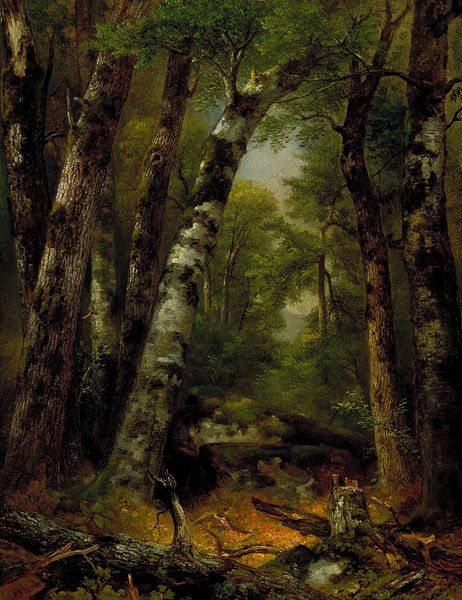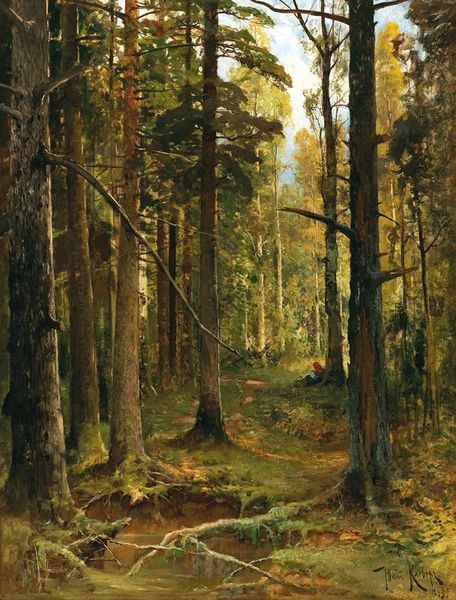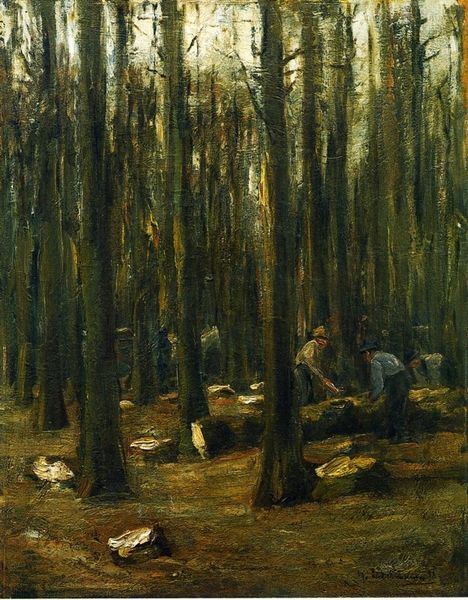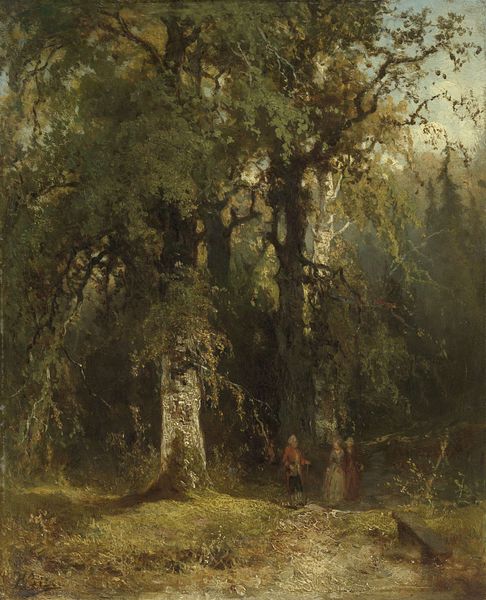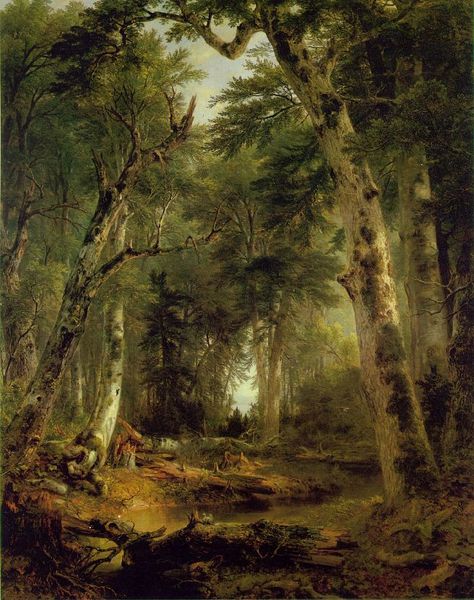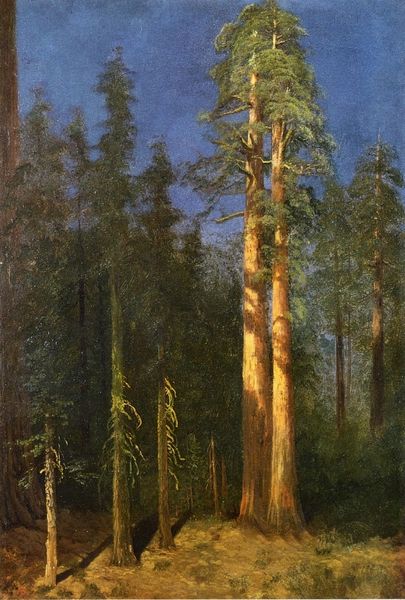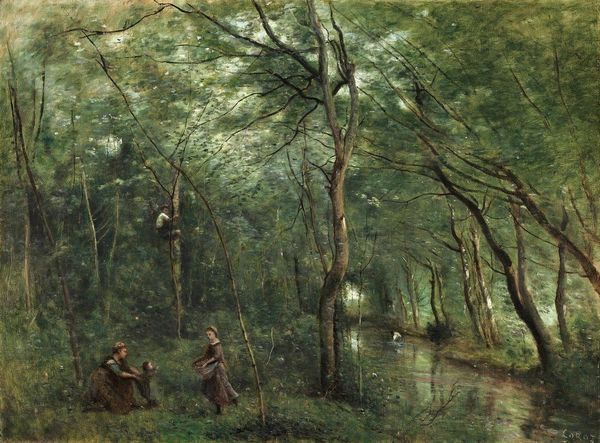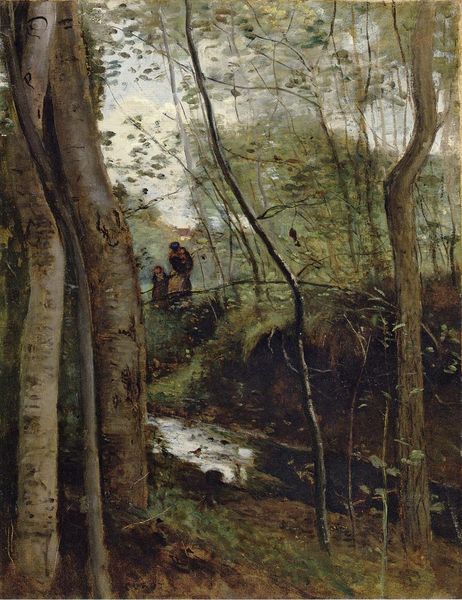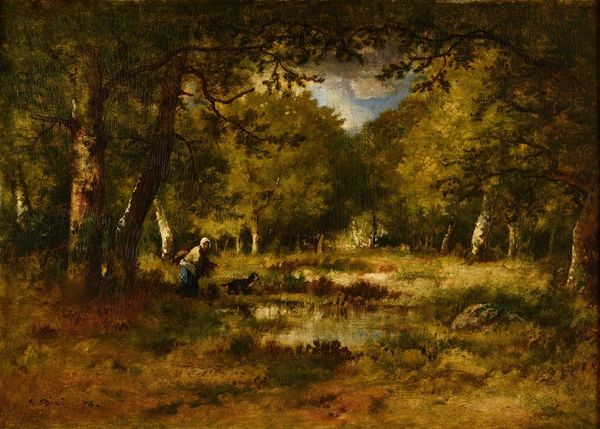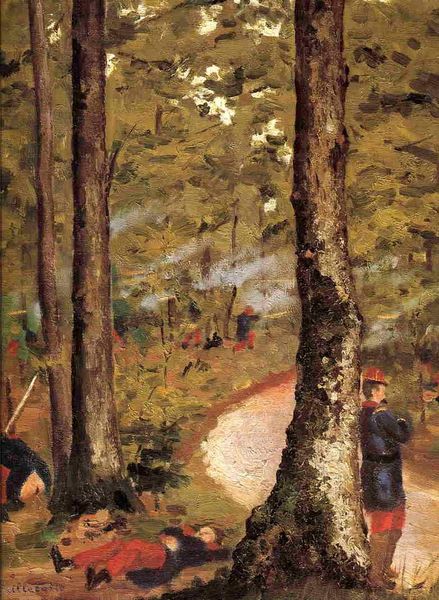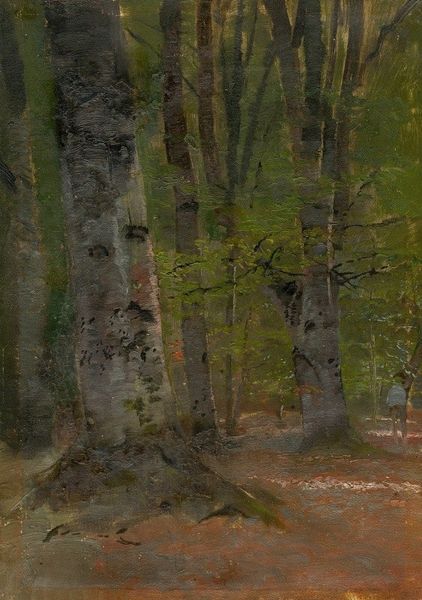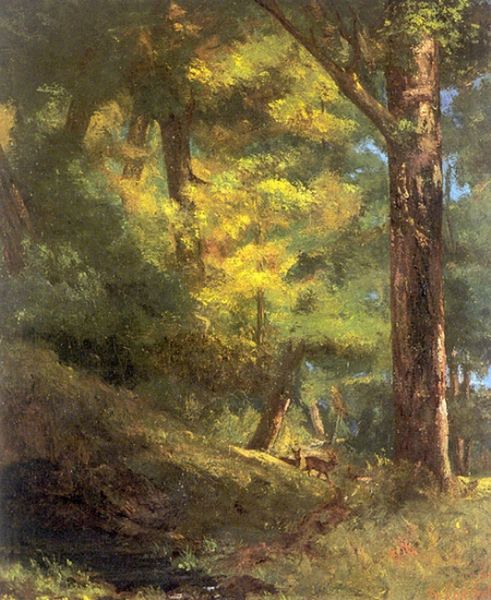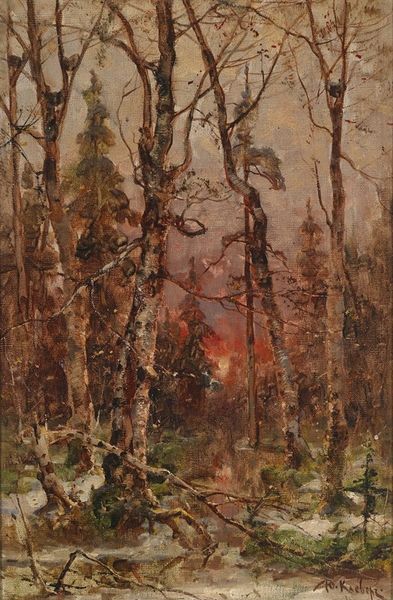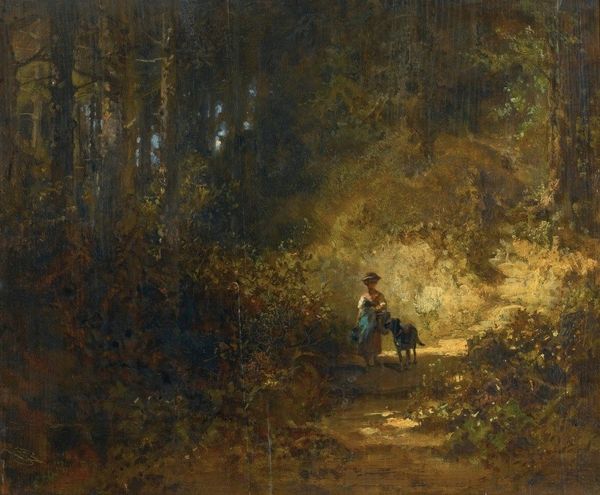
painting, plein-air, oil-paint
#
tree
#
narrative-art
#
painting
#
impressionism
#
plein-air
#
oil-paint
#
landscape
#
forest
#
natural-landscape
#
realism
Copyright: Public domain
Curator: Thomas Hill's canvas, called "Artist at His Easel in the Woods", presents a moment of artistic creation deep within a sylvan setting. The precise date remains a mystery, but the style points towards a period when artists were increasingly drawn to nature and to working outside. Editor: Immediately, the forest almost feels like a cathedral of trees. It's like nature is the deity here, inspiring the artist. It makes you think about the power that images of the natural world have held, and still hold. Curator: Hill was indeed part of a movement that saw the wilderness, especially locations like Yosemite Valley, as powerful symbols of American identity and even Manifest Destiny. This ties in with transcendentalist thought; that nature reflects and shapes culture. The artist is within, engaging with the subject. Who is included? Who is left out? Editor: Yes, and the positioning of the artist within the woods sparks further questions. There is this figure who looks dwarfed amidst these colossal trees, hinting at the diminishment of the self and possibly an expansion of spirit. It evokes the Romantic era notion of the sublime – nature's grandeur rendering us small yet awakened. I am also fascinated by the single birch tree, perhaps a symbol of renewal and potential that the artist seeks to interpret and imbue with a particular meaning through the artistic act. Curator: That interplay between individual agency and the vastness of nature raises fascinating questions of who gets to frame and define “nature.” Hill's very presence with his easel introduces the complicated issue of accessibility in representing such a scene. In addition, there's the implication of artistic vision as inherently mediated through particular perspectives and privilege. Editor: Definitely. There's a strong symbolic connection in that activity, and within the setting that might tell us something important. Looking at this work through the lens of cultural memory, there is a recurring theme in painting of the solitary artist, in nature, facing existential and practical concerns. This resonates deeply, this image of solitude and concentration. Curator: The work's value lies partly in its invitation to reflect on how visual depictions shape our historical narrative. Ultimately, considering identity in relation to nature—with its inherent hierarchies, cultural significance, and power structures, as seen represented in Hill’s image—is always valuable. Editor: And, for me, it’s this invitation that truly encapsulates the emotive quality. We can reflect on continuity across a collection of these symbols and artistic efforts.
Comments
No comments
Be the first to comment and join the conversation on the ultimate creative platform.
